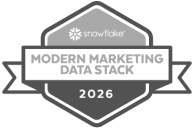What distinguishes data lineage from business lineage?
Data lineage refers to the detailed record of the life cycle of data, tracking its movement through various systems and transformations. It offers a technical view, capturing the sequence of processes data undergoes within an organization's IT infrastructure. Understanding data lineage is crucial for managing data workflows and ensuring compliance with governance standards.
Conversely, business lineage deals with the flow of data from a business perspective, documenting how data is utilized in business operations, applications, and decision-making processes. It provides a simplified, high-level view that is accessible to business users.
Key differences between data and business lineage
- Data lineage: Essential for IT professionals to manage data workflows and ensure compliance with governance standards.
- Business lineage: Helps business stakeholders understand how data is transformed and aggregated for strategic use.
- Tools for data lineage: Often include automated mapping and visualization of data paths.
- Business lineage reports: Typically summarize data flows using business terms and concepts.
- Audience: Data lineage caters to IT, while business lineage caters to business users.
How does data lineage support data governance?
Data lineage is a foundational element of data governance, providing visibility into the data's journey and transformations across the data landscape. It helps organizations track the origin, movement, and quality of their data, which is crucial for improving governance and compliance.
This transparency is key to ensuring data integrity, security, and compliance with various regulatory requirements. Data lineage tools can automate the capture of this information, making it easier to manage and audit.
Benefits of data lineage in governance
- Granular view: Offers a detailed look at data transformations and dependencies.
- Impact analysis: Instrumental in identifying the impact of changes in data systems.
- Regulatory compliance: Detailed data lineage is often required for regulations like GDPR.
Why is business lineage important for decision-makers?
Business lineage is crucial for decision-makers as it translates complex data movements into business-relevant information. It shows how data contributes to business outcomes and supports strategic decisions. Utilizing data intelligence tools can enhance this understanding by providing deeper insights into data usage.
By providing a business-centric view of data flows, business lineage allows non-technical users to understand and trust the data they rely on for making informed decisions.
Advantages for decision-makers
- Alignment: Aligns technical data with business concepts through metadata and glossaries.
- Data integrity: Aids in verifying the integrity and relevance of data used in reports and analyses.
- Strategic support: Ensures data-driven strategies are based on accurate data insights.
Can data lineage and business lineage be integrated?
Yes, integrating data lineage with business lineage is possible and beneficial. It bridges the gap between technical data management and business strategy, providing a comprehensive view of data's role within an organization. This integration can be supported by using advanced data intelligence tools.
Such integration requires collaboration between IT and business units to align technical data paths with business processes and objectives.
Benefits of integration
- Common understanding: Facilitates a shared understanding of data across departments.
- Traceability: Enables users to trace data from its source to its final business use.
- Operational efficiency: Supports both operational and strategic initiatives.
What challenges arise when managing data and business lineage?
Managing both data and business lineage presents challenges, particularly in maintaining accuracy and currency in rapidly changing data environments. Large organizations with complex systems find it especially difficult to keep lineage information up-to-date. Utilizing data intelligence tools can help address these challenges by providing sophisticated tracking and visualization capabilities.
Another challenge is ensuring that the technical details in data lineage are effectively communicated to business users through business lineage, fostering a mutual understanding.
Challenges in lineage management
- Complex landscapes: Require sophisticated tools for tracking and visualizing lineage.
- Continuous updates: Regular updates to lineage records are necessary due to changes in data sources and transformations.
- Communication: Effective communication between IT and business is essential to maintain alignment.
What are the benefits of using Secoda's data lineage platform?
Secoda's data lineage platform offers a comprehensive solution for managing and understanding the flow of data within your organization. By utilizing this platform, businesses can gain insights into data transformations, track data origins, and ensure compliance with data governance policies.
One of the primary benefits of Secoda's data lineage platform is its ability to provide a clear and detailed view of data movement across various systems. This transparency helps in identifying bottlenecks, optimizing data processes, and enhancing overall data quality. Additionally, it supports collaboration among data teams by offering a centralized platform for data management.
- Improved Data Governance: Ensure compliance and manage data policies effectively across your organization.
- Enhanced Data Quality: Identify and rectify data issues swiftly to maintain high data standards.
- Increased Efficiency: Streamline data processes by pinpointing inefficiencies and optimizing workflows.
- Collaboration: Facilitate teamwork by providing a shared platform for data insights and management.
- Scalability: Adapt to growing data needs with a platform designed to scale with your organization.
Learn more about how Secoda's data lineage platform can transform your data management strategies.
How can I get started with Secoda?
Getting started with Secoda is straightforward and designed to be as seamless as possible. Whether you are looking to enhance your data governance, improve data quality, or streamline your data processes, Secoda provides the tools you need to succeed.
To begin your journey with Secoda, simply reach out to their sales team who can guide you through the onboarding process and help tailor the platform to meet your specific needs. The team is dedicated to ensuring you get the most out of Secoda's capabilities.
Don't wait to transform your data management. Get started today and discover how Secoda can support your business goals.






.png)
.png)








